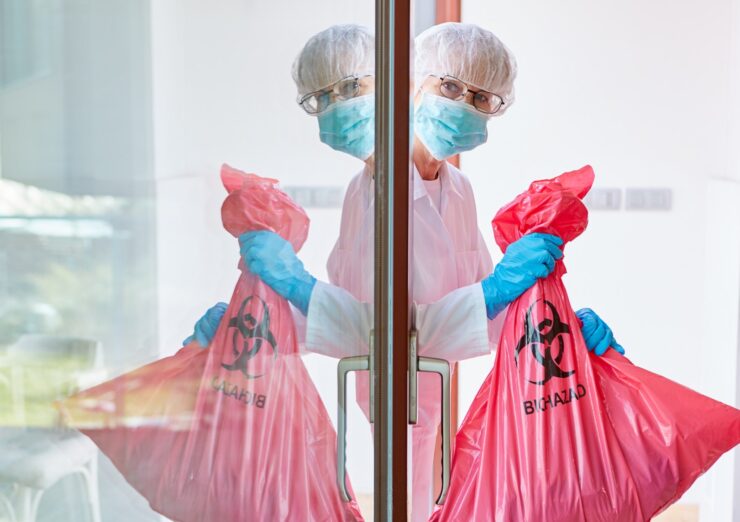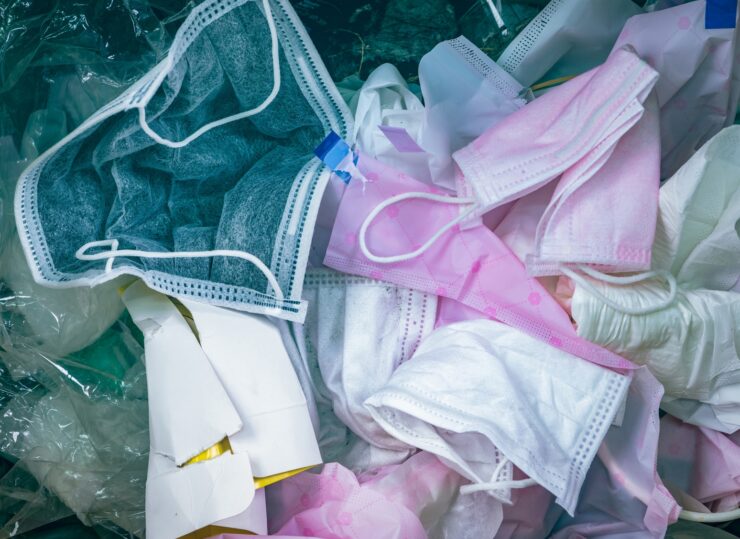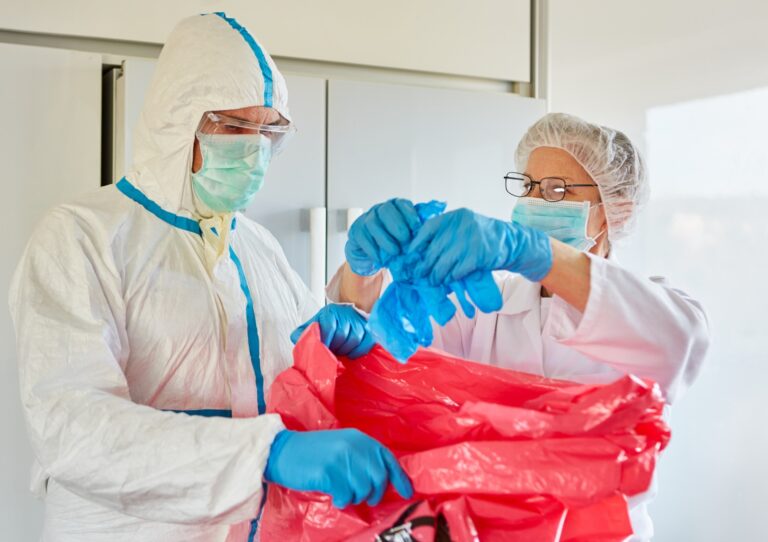Do you work in healthcare? Are you worried about the risks of exposure to medical waste?
This article outlines how medical waste can threaten the well-being of healthcare workers and what to do in the event of exposure. Learn how to stay safe and minimize your risk of medical waste-related illness.
Health Risks of Medical Waste Exposure
Medical waste, including items such as needles, syringes, scalpels, swabs and other potentially infectious items, is a potential risk to the health of those working in healthcare environments. In addition to carrying potential pathogens that can cause disease or infections, medical waste may contain sharp instruments or forgotten medications which have the potential to cause physical injury.
Healthcare workers can be exposed to medical wastes and their associated risks in a number of ways. These include direct contact with hospital-generated waste and sharps, as well as handling contaminated clothing or bedding. In some cases, these items may even be inadvertently taken home by healthcare workers after being exposed to patients at work sites. Ingestion of contaminated materials is another risk associated with exposure to medical waste.
To reduce the risk of exposure and injury associated with medical waste, hospitals should implement medical waste management practices such as using proper disposal techniques and using appropriate personal protective gear when necessary. Furthermore, regular safety training sessions should be regularly conducted at all healthcare facilities in order to educate staff members about proper safety procedures associated with medical waste handling and disposal.

Potential Sources of Medical Waste Exposure
Common sources of exposure to it in healthcare facilities include:
- Accidental contact – Direct contact with needles and other medical devices can occur due to improper handling or disposal.
- Inadequate containment – Medical devices, solid waste, and liquid also should be appropriately contained so as to prevent release into areas accessible by personnel.
- Airborne exposure – Dust particles present in a medical environment may contain a variety of harmful components, such as hazardous substances and infectious agents.
- Breakage/leakage of containers – Proper disposal containers must be used when collecting and disposing of medical equipment and wastes. Broken containers or leaks are potential sources of exposure to hazardous materials and should be managed appropriately.
- Splashback- Splashback can occur due to improper handling of contaminated items or inadequate safety protocols when using hazardous materials (e.g., cleaning agents). Splashback may also occur during autoclaving if the process is mishandled or if the item being decontaminated contains liquid which is aerosolized by pressure changes in the chamber.

Regulations and Guidelines for Medical Waste Management
Effective management of it is essential to protect the health and safety of healthcare workers and patients. Health departments, medical institutions, laboratories, pharmaceutical companies and other organizations that generate or manage medical waste must comply with federal regulations, state regulations and local guidelines.
In addition to applicable governmental regulations, healthcare facilities should adhere to industry-standard best practices for monitoring the handling and disposal of different types of hazardous materials along the entire disposal chain — from the point where it’s generated to where it is stored before pick-up or disposal at official sites. Best practices include designating one specific individual as responsible for managing the organization’s hazardous materials; establishing rules for safe handling/segregation/labeling; instituting a proper training program for all personnel involved in dealing with hazardous materials; providing appropriate personal protective equipment (PPE); using appropriate sharps containers; suspending operations if there is an unusual event (for example if a broken container or spilled material occurs); documenting all spill or violation incidents.
To effectively manage these exposure risks including potential infectious agents such as pathogens (viruses, bacteria), protozoa or helminths (parasitic worms) – organizations must develop comprehensive regulations that take into account local code requirements as well as classification criteria used by state health departments. These codes determine which type of containers should be used for various kinds of hazardous materials — such as needles versus chemical containers —and how those containers should be designed for safe storage pre-trash pick-up. This helps minimize potential exposure risks during storage time frames until onsite pick-up by approved vendors takes place.

Strategies for Minimizing Medical Waste Exposure
Minimizing exposure requires the use of proper safety procedures and equipment. It is essential for healthcare workers to understand the hazards of medical waste and to develop safe work practices for handling, storing, and disposing of it.
Employers should provide comprehensive training to healthcare workers on the proper handling, storage, and disposal of medical waste. Training should cover a range of topics including basic medical waste regulations, disposal methods such as incineration or autoclaving, contamination risks posed by sharps and other materials, and general safety measures such as wearing gloves and goggles when handling contaminated materials.
Occupational health programs can help workers reduce their risk by limiting their exposure to hazardous substances in the workplace, such as infectious materials or chemicals used in cleaning processes. Additionally, physicians and nurses can minimize their exposure by using proper PPE (personal protective equipment) when managing contaminated materials or when dealing with surfaces that may have been exposed to infectious agents.
Another common strategy for reducing risk is the implementation of a Medical Waste Management Plan. Such a plan involves developing standardized processes for handling, storing, transporting and disposing of hazardous medical waste in accordance with applicable laws and regulations. Such plans should include provisions for identifying potentially infectious materials; selecting appropriate containers for separating potential biohazards; establishing protocols for transport; providing appropriate personnel protection (PPE); monitoring regulatory developments; ensuring timely disposal according to local regulations; performing periodic inspections; conducting incident reviews after an exposure incident occurs; and keeping current records on personnel training specific to the medical waste management plan.

Conclusion
In conclusion, the medical waste industry has grown tremendously in recent years and has become of particular concern to health professionals. It is important to be aware of the dangers involved with improper disposal of medical and hazardous waste. Healthcare workers should take extra precautions when handling medical waste, and focus on safe storage protocols, maintaining safe disposal methods and wearing appropriate protective gear while handling or disposing of hazardous materials.

